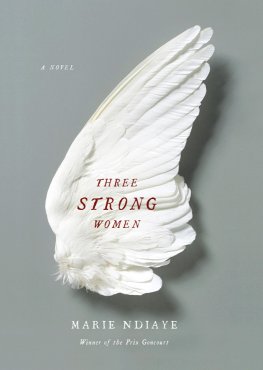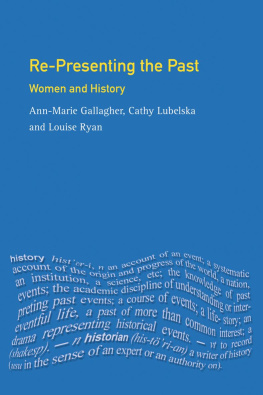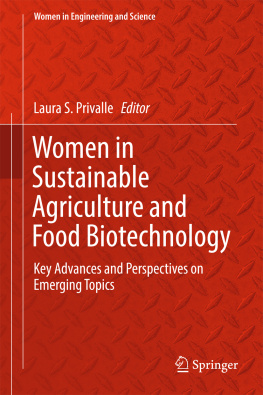W OMEN IN A GRICULTURE
W OMEN'S H ISTORY AND C ULTURE
W OMEN IN A GRICULTURE
A Guide to Research
Marie Maman
and Thelma H. Tate
W OMEN AND F UNDAMENTALISM
Islam and Christianity
Shahin Gerami
W OMEN AND T ECHNOLOGY
An Annotated Bibliography
Cynthia Gay Bindocci
T HE H IGHER E DUCATION
OF W OMEN IN E NGLAND
AND A MERICA , 1865-1920
Elizabeth Seymour Eschbach
L IVES OF W OMEN P UBLIC
S CHOOLTEACHERS
Scenes from American
Educational History
Madelyn Holmes
and Beverly J. Weiss
W OMEN IN A GRICULTURE
A G UIDE TO R ESEARCH
M ARIE M AMAN AND T HELMA H. T ATE
First published by Garland Publishing, Inc.
This edition published 2011 by Routledge:
Routledge
Taylor & Francis Group
711 Third Avenue
New York, NY 10017
Routledge
Taylor & Francis Group
2 Park Square, Milton Park
Abingdon, Oxon 0X14 4RN
Copyright 1996 by Marie Maman and Thelma H. Tate
All rights reserved
Library of Congress Cataloging-in-Publication Data Maman, Marie.
Maman, Marie.
Women in agriculture : a guide to research / Marie Maman and Thelma H. Tate.
p. cm. (Women's history and culture ; v. 11) (Garland reference library of social science ; v. 908)
Includes index.
ISBN 0-8153-1354-3 (alk. paper)
1. Women in agricultureBibliography. I. Tate, Thelma H. II. Title. III. Series. IV. Series: Garland reference library of social science ; v. 908.
Z7963.E7M316 1996
[HD6073.A29]
016.3314'83dc20
95-41230
CIP
We would like to dedicate this book to Ester Boserup for her pioneering work, Womens Role in Economic Development. She was the first to recognize how important womens role is in agricultural development, and she strongly encouraged further research in this area.
Introduction
In what ways have women contributed to agriculture? To what extent have scholars addressed these contributions in the professional literature? What has been the impact of gender in agricultural policy and economic development? What is the status of gender equity in the division of farm labor and in agricultural education? Such questions are raised by students and researchers worldwide who seek documentation which focuses on these vital topics.
Our experiences as reference librarians at an academic library serving students and faculty at Cook College, the land-grant college of New Jersey and Douglass College, the largest womens college in the United States, have been that information on the many topics of women working in the field of agriculture is spread over many areas. Often it is necessary to use many sources to gather enough information to cover this topic with a degree of adequacy. The purpose of this bibliography is, therefore, to synthesize this unique widely dispersed information in one volume, to assist researchers, faculty, and students in expediting the research process. A faculty member preparing material for teaching a class or a student writing a paper in agriculture, anthropology, economics, history, or sociology will find this volume useful. It is an invaluable source for works related to women farmers, sexual division of labor in farming, economic, historical, or educational aspects of women on the farm.
We have included only information easily available at larger academic libraries or through inter-library loan. We have searched our own library catalog, and over 75 percent of the material we have included is available in our own library. We have also searched Research Library Information Network (RLIN), a database covering the book collections in the largest libraries in the United States, to add information we do not have at Rutgers, and we have used inter-library loan to secure this material. To locate information published in journals, we have searched many databases, such as Agricola and CAB, the Commonwealth Agriculture Bureaus database, Historical Abstracts, America: History and Life, ERIC, the Education Index online, Sociological Abstracts, the Wilson Indexes in Social Sciences and Education Index, Abstracts in Anthropology, Womens Studies Abstracts and Studies on Women Abstracts (see a description of these sources in the section under Research Guides).
The first part of the book includes the bibliography and is organized under broad topics, and the information in each chapter is listed alphabetically by author. The chapter on economics, where we found most of our information, is divided into major geographical areas and then alphabetically by authors. We have not included in this bibliography conference papers, symposiums, or reports from the many different organizations working with women in the fields of agriculture. A bibliography covering this literature was published in 1985 by the National Council for Research on Women and compiled by Shelly Kessler. The title is Third World Women in Agriculture: An Annotated Bibliography, and the author claims in the introduction that the purpose is to locate material on this subject available in the New York-Washington area. Ms. Kessler mentions in the introduction how hard it was to locate information on this topic, and that traditional means of literature searching were not applicable to the subject. This is one of the reasons why we started searching the databases available in our library and compiled what we have found, but, contrary to that in Ms. Kesslers bibliography, the material we have listed is available in libraries throughout the United States.
The second part of the book is a research guide. Here, we have added a list of studies in French. Since a comprehensive bibliography with over 400 entries relating to South America was published in 1985 (Citation no 163), Spanish language entries have not been included in this work. The chapter on other bibliographies contains complete works on the subject, bibliographical articles in journals as well as works that devote chapters to the topic. Journals that publish on topics related to women farmers or women in agriculture, as well as whole journal issues on the same subject, are included. Finally, we added descriptions of electronic resources and indexes for sources not available in electronic format.
We thank our colleagues in the Mabel Smith Douglass Library for their support and encouragement, Phyllis Palfy for all of her help with inter-library loans, and Shirley Peck for getting books for us through the material delivery service at Rutgers.
Annotated Bibliography
Historical Studies on Women in Agriculture
Women have become a subject worthy of serious research in the history of agriculture relatively recently, a change that parallels the general womens movements. Core bibliographies such as Catherine R. Loebs and others1 reflect the scarcity of unique sources on women in agriculture and highlight the need for further research in this area. While the role of women has been randomly intertwined in the history of agriculture from ancient times, there is now a determined need to document womens specific contributions as well as the conditions and impact of their work in this most vital area of life in global cultures.
In her book Promise to the Land, internationally recognized author Joan Jensen states: Urban women held center stage and were the focus of the most exciting new research generated by the feminist movement of the 1970s.2 A close review of the literature illuminates the correctness of this statement in that there are very few studies of this nature on rural women before the middle of the 1980s. Prior to this time, oral and local histories presented the most comprehensive records of rural women and their agricultural activities. Today, scholars recognize the important place rural women held in the history of their countries as presented through research, historical studies, and fiction on topics related to rural womens lives all over the world.











